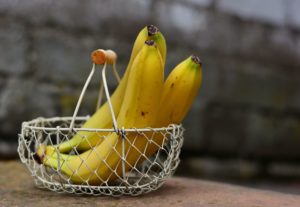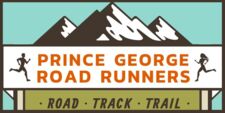Sports Nutrition Basics for Runners
by Registered Dietitian and PGRR member Lindsay Van der Meer

Have you ever eaten something shortly before going for a run hoping it won’t bother you, then not felt so good a few kilometres in? If you are nodding in agreement, chances are you are not alone. Most runners have been there.
If you’d eaten that same food and not exercised, you might not have felt any differently. But exercise places stress on your body, which means that what you eat around the time of your run matters.
It matters because what you eat in the hours before your run can mean difference between feeling great and having stomach cramping or feeling like you have no energy.
It matters because how you eat after you run can restore and repair your body for your next workout.
Read on for some simple strategies that can help you feel your best. Whether you’re training for your first 5km or you’re a seasoned marathoner chasing after a PB, applying the basics of sports nutrition and hydration can improve your training and racing.
BEFORE YOU GO
Get Hydrated
Being well hydrated is essential for feeling good and running your best.
Exercising raises your body temperature and sweating is your body’s way of regulating this. If you are not drinking enough fluids, your body cannot sweat enough and your body temperature goes up.
What does this mean? You’re perceived exertion and heart rate both increase. In other words you’re going to feel like you’re working much harder to maintain the same pace (because you are). If you’re using a heart rate monitor for your training, being dehydrated will make it harder for your to stay in your training zone.
Waiting to drink until you feel thirsty is too late. Your body’s sensation of feeling thirsty unfortunately doesn’t get initiated until you are about 2% dehydrated, at which point your performance can already be negatively affected.
How Much to Drink?
Fluid needs are highly variable and depend on factors such as your fitness level, your exercise intensity, individual sweat rate ,and outside conditions such as temperature and humidity. A good rule of thumb is to drink fluids liberally throughout the day to keep your urine the colour of lemonade. In the hour before exercise aim for 1-2 cups of water.
What About Coffee and Tea?
While caffeinated drinks such as coffee, tea and colas do have a diuretic effect (they make you pee), they can still provide you with some fluid. Ideally, caffeinated drinks should not be the only source of fluids you consume though. If you love your coffee, aim to drink an equal portion of non-caffeinated fluids.
CHOOSE PRE-RUN FOODS CAREFULLY
During exercise, food is only helping you if it’s digested and absorbed. Many people make great food choices but they get the timing wrong, and then pay for it when they’re out on their run.
If you eat a sandwich an hour before you go for a run, it’s still going to be in your stomach. What this means is that your body is going to have to direct circulating blood away from your gut and instead to your working muscles, putting digestion on the back burner so you can run. You’ll be more likely to have bloating, cramping, bathroom stops than if you ate earlier. It’s really what you eat for lunch that is fuelling your after work run.
Pre-run Snacks Should be Kept Small and Simple
Foods high in fibre, fat, and protein all empty from your stomach slowly. While having a meal with these nutrients (think: ham and cheese sandwich on whole grain bread) is great 3-4 hours before your run, it’s not ideal less than 2 hours prior.
Keep your pre-run snacks small and low in fibre, fat and protein so you can digest them before your run. Great choices include ½ a piece of fruit and a glass of water, a small yogurt, or a handful of pretzels.
For the morning runners out there, be sure to check out my earlier post about whether or not you should you eat before your morning workout.
POST RUN NUTRITION:
After running, proper nutrition will help you recover and encourage your body to adapt to your training, so you can continue to build on your progress.
Follow the Four R’s of Recovery Nutrition:
Repair – protein provides the building blocks (called amino acids) to build and repair muscle. Protein foods are include meat, fish, poultry, eggs, beans and legumes, nuts and seeds.
Restore – carbohydrate is the energy source for working muscles and need to be replaced, especially after high intensity endurance sports like running. Grain products, including cereal, pasta, bread and rice are great sources of carbohydrates. Milk, yogurt and many fruits are also a great source of carbohydrate. If you have questions about the possible benefits of going low-carb for your running, be sure to check out my blog post about carbohydrates and performance.
Rehydrate – Fluid is essential to replace sweat losses, especially in hot and humid weather. Even athletes who do a good job of trying to keep taking in fluids during longer bouts of exercise often have a net loss of fluid, so make it a priority to drink up after you run. Almost anything that melts to liquid at room temperature can count as a source of fluid, with the exception of alcohol. Try to steer clear of booze until you have had some water (and food).
Revitalize – Antioxidant rich foods help to counter some of the oxidative stress caused by training. The key here is to stick with food sources rather than supplements, which can actually hinder your body’s adaptive responses to training. The best sources of antioxidants include fruits such as oranges and berries, and brightly coloured vegetables such as bell peppers, spinach and broccoli.
Despite what the supplement industry may have you believe, you can actually get all of these nutrients from food rather than relying on specialty bars and powders.
Looking for some inspiration that combines all of these foods? How about an omelette with spinach, bell peppers and a slice or two of toast washed down with a glass of water.
What If You Don’t Feel Like Eating?
High intensity exercise, such as running intervals, can suppress your appetite and make it difficult to want to eat a recovery meal or snack after your run. While it’s ok to wait a little while for your appetite to return, waiting too long can impact your recovery. If you don’t typically feel hungry for a recovery meal or snack, it may be easier for you to take in your nutrition in a liquid form, such as a smoothie.
THE TAKE-AWAY
When it comes to running, what you eat matters. Small adjustments to the timing and types of foods you consume can make a big difference in how you feel and perform. If you are looking for more specific guidelines for your individual needs or upcoming race, talk to a Registered Dietitian for more information.
Happy Running,
Lindsay
REFERENCES:
Burke, L. (2015). Nutrition for Recovery After Training and Competition. In Burke, L. & Deakin, V. (5th Eds), Clinical sports nutrition (pp 420 – 462). Sydney, NSW: McGraw-Hill
O’Connor, H., Honey, A., & Caterson, I. (2015). Weight Loss and the Athlete. In Burke, L. & Deakin, V. (5th Eds), Clinical sports nutrition (pp 164 – 190). Sydney, NSW: McGraw-Hill
